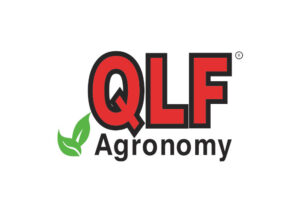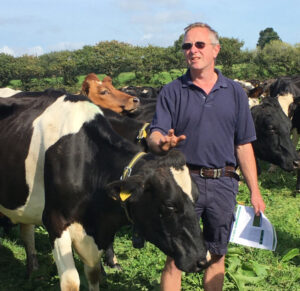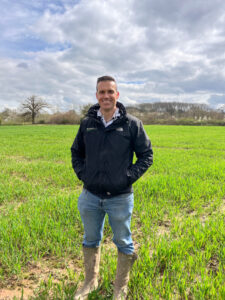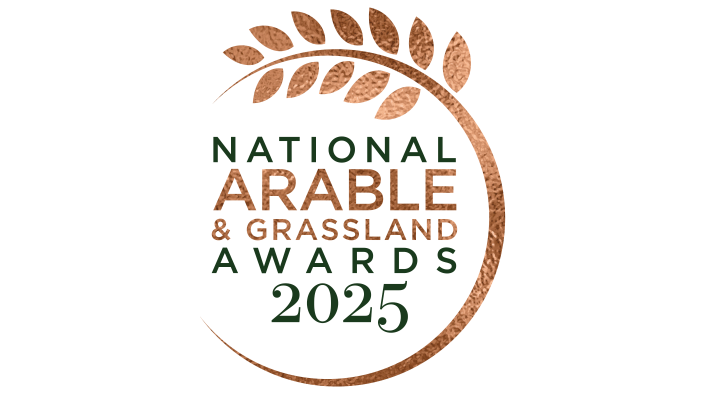 To be considered for this award, candidates must exhibit a strong dedication to reducing carbon footprint and optimising resource utilisation. The Sustainable Farming Award winner will be recognised for their unwavering commitment to implementing sustainable practices and innovative solutions that foster long-term soil health and biodiversity, ensuring the continued productivity of the land for future generations. Sponsored by QLF Agronomy.
To be considered for this award, candidates must exhibit a strong dedication to reducing carbon footprint and optimising resource utilisation. The Sustainable Farming Award winner will be recognised for their unwavering commitment to implementing sustainable practices and innovative solutions that foster long-term soil health and biodiversity, ensuring the continued productivity of the land for future generations. Sponsored by QLF Agronomy.
Andrew and Claire Brewer – FG Brewer
Sustainability sits at the heart of everything the Brewer family do on their 400ha Cornish farm. Building a circular economy based on the Jersey-cross milking herd, every aspect of the business has been fine-tuned to reduce waste and maximise output.
The cattle are pasture-fed, with multispecies swards of plantain, chicory, red and white clover, cocksfoot, timothy and festulolium to offer a variety of rooting types to condition the soil and improve water infiltration.
An all-natural, predominantly homegrown fertiliser regime is in place, with compost derived from bacteria-treated cattle bedding – which is made from waste woodchip – used alongside slurry and some digestate from a local biogas facility. The use of the compost has paid dividends, with treated fields outyielding non-treated pasture by 30kg/DM a day. The only nutrient input purchased on the farm is agricultural salt for the area of fodder beet grown.
 Andrew is part of the Farm Net Zero project, with a focus on how rumination and activity in dairy cattle differ on diverse swards; how field vegetables can be used in a forage-dominated rotation (the farm rents out ground for potato and cabbage production, with the latter seen as a break crop to address grassweeds); and how woodchip and inoculants compare to straw bedding, and the potential carbon footprint.
Andrew is part of the Farm Net Zero project, with a focus on how rumination and activity in dairy cattle differ on diverse swards; how field vegetables can be used in a forage-dominated rotation (the farm rents out ground for potato and cabbage production, with the latter seen as a break crop to address grassweeds); and how woodchip and inoculants compare to straw bedding, and the potential carbon footprint.
The farm has been baselined for carbon credits, with a 100t carbon dioxide equivalent/ha on the pasture, offsetting other farm operations.
Ellen Firth – Firth Flock Flowers
Showing that a small scale isn’t a barrier to sustainability, Ellen is 20 years old and runs North Wales-based business Firth Flock Flowers, alongside a flock of Black Welsh Mountain pedigree sheep. Using just over 3ha, Ellen has created a circular business where every part feeds into the next.
Flowers are established using the no-dig method and nurtured without any chemical inputs. Manure from the sheep is used to provide nutrients and the wool is used for mulching, while rare-breed Welsh Harlequin ducks and guinea fowl handle pests within the crop. Companion planting helps to minimise weed pressure. By not turning the soil, Ellen’s cropping area also acts as a carbon sink.
 Away from the growing, the business is built around locally sourced materials and minimising the impact on the environment. No floral foam is used, vases for the arrangements are purchased from a local potter to order and all the packaging is compostable.
Away from the growing, the business is built around locally sourced materials and minimising the impact on the environment. No floral foam is used, vases for the arrangements are purchased from a local potter to order and all the packaging is compostable.
Any green waste produced on site is composted and used to feed the next crop. To encourage customers to not throw materials away, Ellen also offers a discount system for returned jars and vases.
To create income streams from the flock of sheep, surplus lamb is sold to four local restaurants and any breeding stock are sold into other pedigree flocks.
Breeding her own replacements, Ellen also shears and trims the animals herself and has built a reputation on the show circuit for her flock.
Chris Greenaway – Garnstone Farms
With more than 1,400ha of cropping, split between woodland, grassland and arable crops, Garnstone Farms prioritises sustainability and soil health. This starts with a wide rotation of herbage seed, wheat, oats, maize, beans and oilseed rape, with some land rented out for tenderstem broccoli.
 Chris notes that the shovel is the most important tool in his arsenal. By monitoring compaction in the field, the cultivation and drilling regime is adjusted accordingly, with low-disturbance subsoilers, strip-till cultivators, direct drills and inter-row drills at their disposal.
Chris notes that the shovel is the most important tool in his arsenal. By monitoring compaction in the field, the cultivation and drilling regime is adjusted accordingly, with low-disturbance subsoilers, strip-till cultivators, direct drills and inter-row drills at their disposal.
Insecticides have been removed to protect beneficials and the long rotation means that chemical applications are spread out and varied to avoid resistance issues.
Additional inputs, such as citric acid granules to correct the pH of the water, help to increase the efficacy of glyphosate, and humic and fulvic acids are mixed with fertiliser and some herbicides to protect the microbes in the soil.
Herbal leys and clover-rich swards have been used throughout both the grassland and arable ground, and 6m buffer strips are in place alongside any watercourses. To minimise the risk of erosion, steep ground has been converted to grassland, and maize is established alongside a companion crop.
Crops and poultry manure are fed into an onsite anaerobic digester, with power fed directly into a neighbouring manufacturing plant. The company has also used grant funding to cover the sprayer filling area to prevent harmful run-off, as well as rainwater harvesting equipment to minimise water use.



